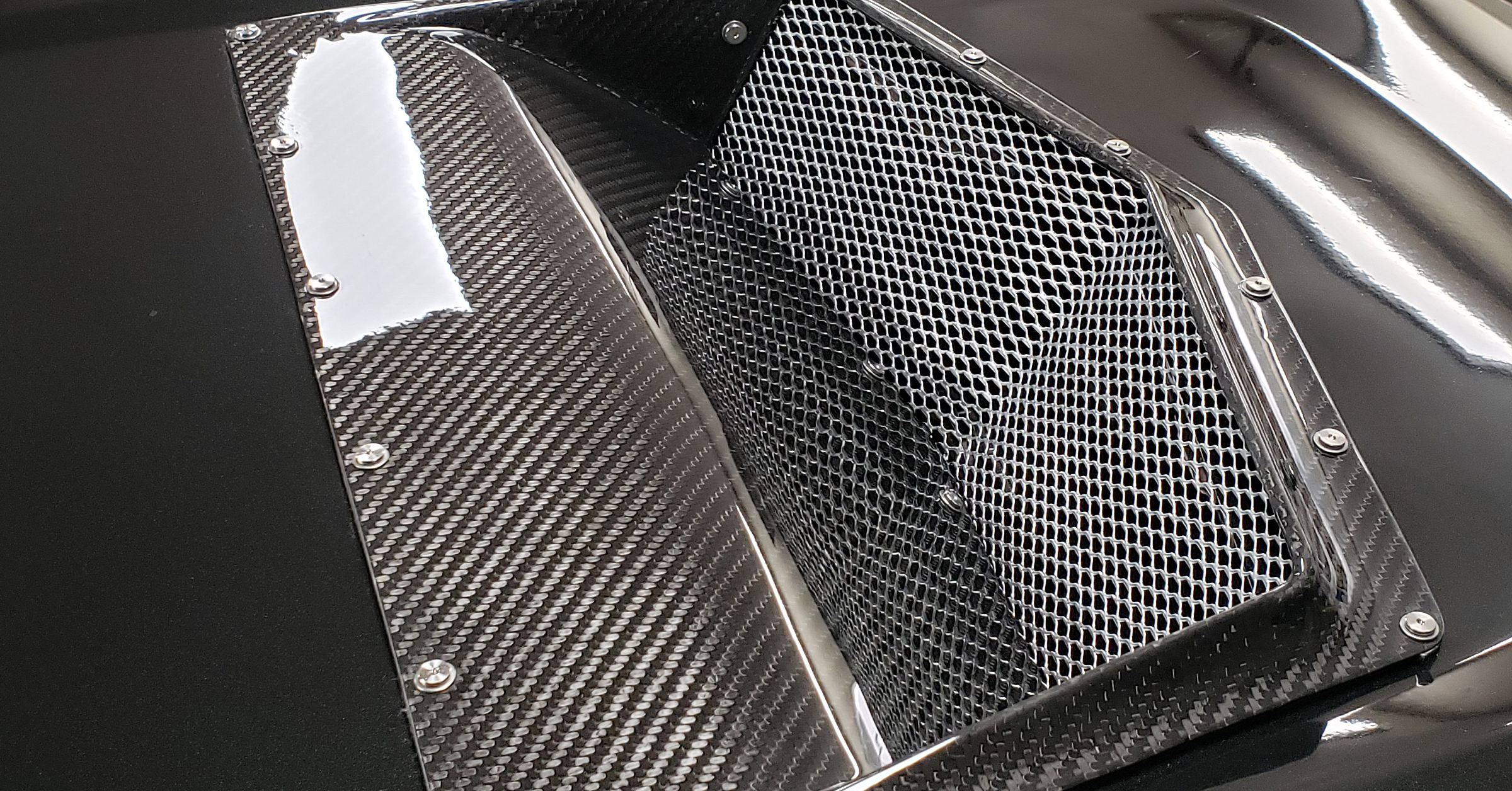Something I’ve wanted to address was lowering engine bay and IA temps. Getting cooler air is a good place to start when tackling high IAT and IAT2 temps.
This was going to be done in 2 stages. 1st, remove built-up heat within the bay and 2nd, to feed the intake system with true outside air. Although I have the AirAid CAI system, you can see how that open filter within the bay ingests all the hot air.
The OEM box with a K&N filter would likely function better as there is an inlet behind the grille and the box is sealed from the bay. However, I’m intent on retaining the AirAid filter, but will address this part of the issue later…stay tuned.
While researching, I started out looking at aftermarket hoods. This would be the simplest solution. But, the only hood worth entertaining was by Amerihood. It’s got a trick, functional ram scoop, but no heat extraction provision. The other issue with it was weight. It’s fiberglass and would exceed the weight of the OEM aluminum one. I don’t have an exact weight of the Amerihood, but the OEM one weighs only ~19lbs (the image shows ~21lbs, but I weighed it with the aftermarket hood shocks, which weigh ~1lb each):
You’re not getting lighter than that, except for carbon fiber. I contacted Amerihood to see if they offer one in CF, but sadly, no. So, I began to investigate vent inserts, which would require modifying my existing hood. Not ideal, but it’s what I was left with.
I think it’s important to talk a bit about the dynamics of airflow across a hood for a moment in order to understand why I chose the one I did. I’m no expert in this area but after doing as much research on the topic as I could, I made some basic conclusions on what might be important. There are low & high-pressure areas on the front of any vehicle. High-pressure areas being the very front, the base of the windshield and most any other area that is vertical to airflow. It’s behind these high-pressure areas that low-pressure areas develop. It’s a common misconception that raising the rear of the hood with washers will allow more airflow, but it’s actually quite the opposite. If anything, you will draw air INTO the rear of the bay and not let airflow OUT because of the dynamics there. It’s one of the reasons why the inlet for your cabin air is right there…as that area draws air IN.
As I need some sort of high-pressure area then an immediate low-pressure one, I looked for what some call a “waterfall” vent. Raised lip in the front with a quick drop off right behind it. I believe this design will draw more air out than a traditional louver style vent commonly seen.
I was limited by the contours of the hood, so it was slim pickings. I wanted the GT500 hood vent, but those contours would not have allowed it. I found a place called Faircloth Composites that makes CF pieces for mostly the corvette market and saw he had 2 style waterfall vents, small & large. The small seemed like it would be a perfect fit.
As I wanted to measure twice and cut only once, I started by figuring my available space. The underside and between the contours:
It would be close, and I figured I’d have to trim some of the sides. Once space was figured, I transcribed the template onto the hood:
An intro vid made to describe some of the concepts I covered above:
Then it was time to cut! It may not seem like it in the following vid, but it took me awhile to get the nerve to cut into a perfectly good hood. I cried, whimpered, said a few prayers and even second guessed myself…but then, just went for it!
Here’s the piece I cut, did a pretty good job of centering this in the hood:
When cutting was done, it was time to get the vent ready for what it would take to secure it.
After getting it mocked up, I sent it to be clear-coated (they are sent raw CF and need to be UV protected):
Credit goes to Absolute Collision out of Sacramento, CA for the outstanding clear coat job!
Finally! Install time!
I’m pleased with it. Not the most appealing to look at but will definitely work. I took it out for a few hours to see how heat would build and, although I have no hard data, I can tell it is doing its job big time. After lots of driving, I would come home and prop the hood up and it would be very hot. But I opened the hood and it was barely warm. One piece to the puzzle that is heat management.
Granted, the real test will come in summer! Bring it on!
For those wondering what it did to the weight, the piece I took off weighed ~1.5lbs and the entire vent setup I installed also weighed ~1.5lbs…so it was a wash.

